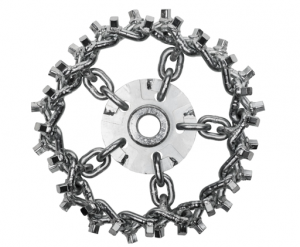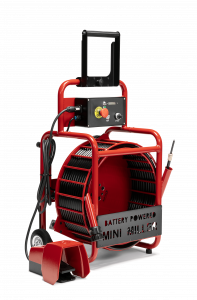First, the old scale and rust have to be removed using patented tools designed to remove rock-hard scale and rust, without breaking up the old remaining pipe.
This carbide chain has very sharp edges and it fits on a special cable that rotates at 600 RMP inside the pipe. The chains come in specific sizes that can only expand to the width of the internal diameter of the pipe being cleaned, which prevents any excessive outward pressure on the pipe wall.
Next, a high-pressure water “jetter” is inserted into the pipe which washes out all the debris. At the end of the cleaning process, all roots, rust, and scale have been removed, and cracks and holes are clearly visible in the next step.
Next, a video camera is run through the pipe to see how long the pipe is and whether it has been cleaned sufficiently. The cleaning process might have to be repeated. Also, if there are very large holes and voids at the bottom of the pipe, they will be filled with epoxy under camera supervision, prior to pipe lining.





